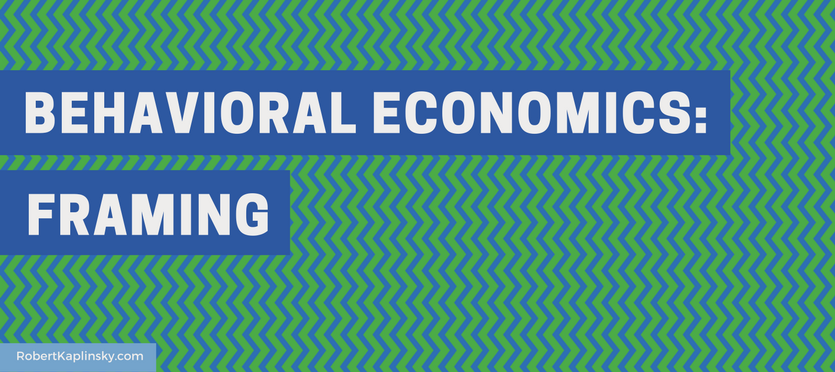NOTE: This is one of a series of ten blog posts on cognitive biases that have applications in education.
People view a situation differently depending on how the information is framed for them. Consider what happened in this experiment by economists Amos Tversky and Daniel Kahneman. Participants were given the hypothetical situation that a disease was anticipated to kill 600 people and they had to choose between two alternatives to combat it. What made the experiment interesting was how they worded the choices.
Phrasing One
- If Program A is adopted, 200 people will be saved.
- If Program B is adopted, there is 1/3 probability that 600 people will be saved, and 2/3 probability that no people will be saved.
Phrasing Two
- If Program C is adopted 400 people will die.
- If Program D is adopted there is l/3 probability that nobody will die. and 2/3 probability that 600 people will die.
Notice that Program A has the exact same results as Program C, just worded differently. Also, Program B has the exact same results as Program D, just worded differently. Since the data being conveyed is exactly the same, you might think the results of the different phrasings would be similar. You would be wrong.
When participants were given Phrasing One, 72% of them chose Program A. However when participants were giving Phrasing Two, 78% of them chose Program D. So, the same data framed differently got significantly different results (from 72:28 to 22:78). This is scary when you think about it, because the entire time, the information didn’t change, just its presentation changed.
Another example comes from Aldert Vrij’s book Detecting Lies and Deceit. In it he describes an example of how a seemingly superficial piece of information changes our perspective:
Participants saw a film of a traffic accident and then answered questions about the event, including the question ‘About how fast were the cars going when they contacted each other?’ Other participants received the same information, except that the verb ‘contacted’ was replaced by either hit, bumped, collided, or smashed. Even though all of the participants saw the same film, the wording of the questions affected their answers. The speed estimates (in miles per hour) were 31, 34, 38, 39, and 41, respectively.
Accordingly, this evidence suggests that the words we choose to frame information can effect how others perceive the information.
In general, when the information being shared does not get the reaction you anticipated, consider how it is being framed. Perhaps adjusting the framing will change how it is received.
Where else might framing help us convey the messages we are trying to share?

